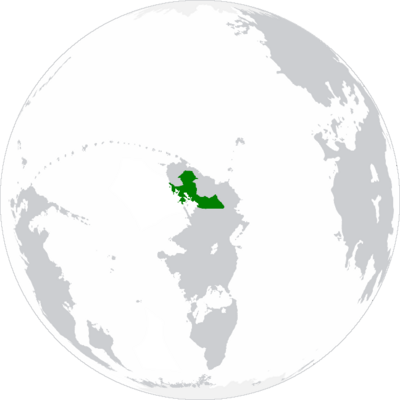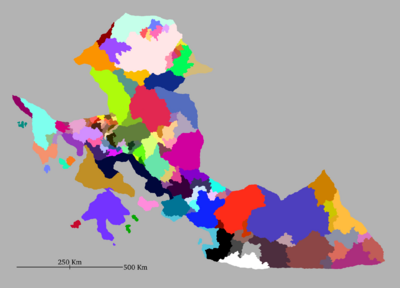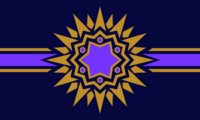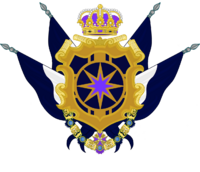Kustannuksan Empire (Pacifica): Difference between revisions
No edit summary |
|||
| Line 29: | Line 29: | ||
|map_caption2 = <!--Caption to place below second map--> | |map_caption2 = <!--Caption to place below second map--> | ||
|image_map2_size = 400 | |image_map2_size = 400 | ||
|capital = '''[[Pohjoinen (Pacifica)|Pohjoinen]]''' | |capital = '''[[Pohjoinen (Pacifica)|Pohjoinen]]''' | ||
|coordinates = 2°25'N 25°69'E | |coordinates = 2°25'N 25°69'E | ||
| Line 50: | Line 51: | ||
|religion_ref = <!--(for any ref/s to associate with religion data)--> | |religion_ref = <!--(for any ref/s to associate with religion data)--> | ||
|demonym = Kustannuksan | |demonym = Kustannuksan | ||
|government_type = Federal Parliamentary Constitutional Monarchy | |government_type = Federal Parliamentary Constitutional Monarchy | ||
|leader_title1 = Hallits (Emperor/Empress) | |leader_title1 = Hallits (Emperor/Empress) | ||
| Line 57: | Line 59: | ||
|leader_title3 = President of the Imperial Senate | |leader_title3 = President of the Imperial Senate | ||
|leader_name3 = Carlo Adamo De Courantis | |leader_name3 = Carlo Adamo De Courantis | ||
|leader_title14 = | |leader_title14 = World Forum Ambassador | ||
|leader_name14 = | |leader_name14 = Evalin Grøndahl | ||
|legislature = Imperial Parliament | |legislature = Imperial Parliament | ||
|upper_house = Imperial Senate | |upper_house = Imperial Senate | ||
| Line 65: | Line 67: | ||
|sovereignty_note = | |sovereignty_note = | ||
|established_event1 = '''Kolmen Osavaltion Sopimus''' | |established_event1 = '''Kolmen Osavaltion Sopimus''' | ||
|established_date1 = | |established_date1 = 24 February 1524 AD | ||
|established_event2 = <!--Second key event--> | |established_event2 = <!--Second key event--> | ||
|established_date2 = <!--Date of second key event--> | |established_date2 = <!--Date of second key event--> | ||
|established_event13 = <!--(up to 13 distinct events may be included)--> | |established_event13 = <!--(up to 13 distinct events may be included)--> | ||
|established_date13 = | |established_date13 = | ||
|area_rank = | |area_rank = | ||
|area = | |area = | ||
|area_km2 = | |area_km2 = 783,286 | ||
|area_sq_mi = 302428 | |area_sq_mi = 302428 | ||
|area_footnote = <!--Optional footnote for area--> | |area_footnote = <!--Optional footnote for area--> | ||
|percent_water = | |percent_water = | ||
|area_label = | |area_label = Total | ||
|area_label2 = <!--Label below area_label (optional)--> | |area_label2 = <!--Label below area_label (optional)--> | ||
|area_data2 = <!--Text after area_label2 (optional)--> | |area_data2 = <!--Text after area_label2 (optional)--> | ||
| Line 88: | Line 91: | ||
|population_density_rank = | |population_density_rank = | ||
|nummembers = <!--An alternative to population for micronation--> | |nummembers = <!--An alternative to population for micronation--> | ||
|GDP_PPP = <!--(Gross Domestic Product from Purchasing Power Parity)--> | |GDP_PPP = <!--(Gross Domestic Product from Purchasing Power Parity)--> | ||
|GDP_PPP_rank = | |GDP_PPP_rank = | ||
| Line 98: | Line 102: | ||
|GDP_nominal_per_capita =56,788 | |GDP_nominal_per_capita =56,788 | ||
|GDP_nominal_per_capita_rank = | |GDP_nominal_per_capita_rank = | ||
|Gini = 21.6 | |Gini = 21.6 | ||
|Gini_ref = <!--(for any ref/s to associate with Gini number)--> | |Gini_ref = <!--(for any ref/s to associate with Gini number)--> | ||
|Gini_rank = | |Gini_rank = | ||
|Gini_year = | |Gini_year = | ||
|HDI_year = <!-- Please use the year to which the data refers, not the publication year--> | |HDI_year = <!-- Please use the year to which the data refers, not the publication year--> | ||
|HDI = 0.968 | |HDI = 0.968 | ||
| Line 107: | Line 113: | ||
|HDI_rank = | |HDI_rank = | ||
|HDI_ref = <!--(for any ref/s to associate with HDI number)--> | |HDI_ref = <!--(for any ref/s to associate with HDI number)--> | ||
|currency = | |||
|currency = Tähtirah | |||
|currency_code = TAH | |currency_code = TAH | ||
|time_zone = UTC | |time_zone = UTC | ||
| Line 130: | Line 137: | ||
The '''Kustannuksan Empire''' (Kustannan: ''Kustannuksalainen Imperiumi; Vedangari: कुस्तन्नुक्सन साम्राज्य''), also referred to as simply '''Kustannuksa''', is a sovereign confederation of states located in northern [[Bailtem (Pacifica)|Bailtem]], bordered by the [[Dacian Federation]], [[New Altnavia]] and [[Amberholde]] in the north, [[Andrendia (Pacifica)|Andrendia]] in the east, [[Arnchow (Pacifica)|Arnchow]] in the south, and the South Pacific Ocean to the west. Kustannuksa's territory is mainly characterized by expansive plains in the north and south-east, and large mountain chains concentrating in the west and center. Kustannuksa has a mostly tropical rainforest climate, although other tropical climates can be found in the south, as well as oceanic and tundra climates which can be found at higher altitudes in the mountain chains. Kustannuksa has a total area of 783,286 km<sup>2</sup>, and a population of 159 million (as of 2024), which makes it the second largest [[List of countries by area (Pacifica)|country by area]], and the [[List of countries by population (Pacifica)|most populous country]] in the [[South Pacific (Pacifica)|South Pacific]]. | The '''Kustannuksan Empire''' (Kustannan: ''Kustannuksalainen Imperiumi; Vedangari: कुस्तन्नुक्सन साम्राज्य''), also referred to as simply '''Kustannuksa''', is a sovereign confederation of states located in northern [[Bailtem (Pacifica)|Bailtem]], bordered by the [[Dacian Federation]], [[New Altnavia]] and [[Amberholde]] in the north, [[Andrendia (Pacifica)|Andrendia]] in the east, [[Arnchow (Pacifica)|Arnchow]] in the south, and the South Pacific Ocean to the west. Kustannuksa's territory is mainly characterized by expansive plains in the north and south-east, and large mountain chains concentrating in the west and center. Kustannuksa has a mostly tropical rainforest climate, although other tropical climates can be found in the south, as well as oceanic and tundra climates which can be found at higher altitudes in the mountain chains. Kustannuksa has a total area of 783,286 km<sup>2</sup>, and a population of 159 million (as of 2024), which makes it the second largest [[List of countries by area (Pacifica)|country by area]], and the [[List of countries by population (Pacifica)|most populous country]] in the [[South Pacific (Pacifica)|South Pacific]]. | ||
The Empire was founded on | The Empire was founded on 24th of February 1524 with the signing of the '''Kolmen Osavaltion Sopimus''' (''usually abbreviated as KOS; literally the "Tri-State Agreement"''), when the '''Timandak Confederation''', the '''Kingdom of Kultansuuni''' and the '''Merenkul Monarchate''' joined the new federal state. Even after the formal dissolution of these nations, their previous ruling classes, governments and aristocracies still continued to hold notable power, as the federal nature of the Empire continued to give them plenty of autonomy; some even became more powerful, as they were appointed by the governments of their states as members of the new Imperial Senate. Most notably, the '''Violetähden''' '''Dinasty''' gained considerable amounts of power in the new government thanks to election of '''Emine''' '''Hürrem Violetähden''' as '''Hallits''' (''Empress'') of the Kustannuksan Empire. | ||
== Etymology == | == Etymology == | ||
Revision as of 16:20, 21 February 2024
Kustannuksan Empire Kustannuksalainen Imperiumi (Kustannan) कुस्तन्नुक्सन साम्राज्य (Vedangari) | |
|---|---|
Motto: "Suuruus seuraa Pohjoistä Tähteä" "महत्त्वं उत्तरतारकस्य अनुसरणं करोति" "Greatness follows the Northern Star" | |
Anthem: "A Star shines over the Seas" Royal anthem: "A beacon of light to follow" | |
 Territories of the Kustannuksan Empire. | |
 | |
| Location | Northern Bailtem. |
| Capital and | Pohjoinen 2°25'N 25°69'E |
| Official languages | Kustannan Vedangari |
| Ethnic groups | Sjöfolk Jasiiradaha Pahaadache Nehirdoğu Nycimbrians Andrendians |
| Demonym(s) | Kustannuksan |
| Government | Federal Parliamentary Constitutional Monarchy |
• Hallits (Emperor/Empress) | Astrid Madeleine Violetähden II |
• Imperial Chancellor | Emil Otto Michelsen |
• President of the Imperial Senate | Carlo Adamo De Courantis |
• World Forum Ambassador | Evalin Grøndahl |
| Legislature | Imperial Parliament |
| Imperial Senate | |
| Imperial Chamber Of Deputies | |
| Establishment | |
• Kolmen Osavaltion Sopimus | 24 February 1524 AD |
| Area | |
• Total | 783,286 km2 (302,428 sq mi) |
| Population | |
• 2024 estimate | 159.007.058 |
• Density | 203/km2 (525.8/sq mi) |
| GDP (nominal) | estimate |
• Total | 6,015,000,000,000 |
• Per capita | 56,788 |
| Gini | 21.6 low |
| HDI | 0.968 very high |
| Currency | Tähtirah (TAH) |
| Time zone | UTC+2 (UTC) |
| Date format | dd/mm/yyyy CE |
| Driving side | right |
| Calling code | +150 |
| World Forum Code | KU |
| Internet TLD | .ku |
The Kustannuksan Empire (Kustannan: Kustannuksalainen Imperiumi; Vedangari: कुस्तन्नुक्सन साम्राज्य), also referred to as simply Kustannuksa, is a sovereign confederation of states located in northern Bailtem, bordered by the Dacian Federation, New Altnavia and Amberholde in the north, Andrendia in the east, Arnchow in the south, and the South Pacific Ocean to the west. Kustannuksa's territory is mainly characterized by expansive plains in the north and south-east, and large mountain chains concentrating in the west and center. Kustannuksa has a mostly tropical rainforest climate, although other tropical climates can be found in the south, as well as oceanic and tundra climates which can be found at higher altitudes in the mountain chains. Kustannuksa has a total area of 783,286 km2, and a population of 159 million (as of 2024), which makes it the second largest country by area, and the most populous country in the South Pacific.
The Empire was founded on 24th of February 1524 with the signing of the Kolmen Osavaltion Sopimus (usually abbreviated as KOS; literally the "Tri-State Agreement"), when the Timandak Confederation, the Kingdom of Kultansuuni and the Merenkul Monarchate joined the new federal state. Even after the formal dissolution of these nations, their previous ruling classes, governments and aristocracies still continued to hold notable power, as the federal nature of the Empire continued to give them plenty of autonomy; some even became more powerful, as they were appointed by the governments of their states as members of the new Imperial Senate. Most notably, the Violetähden Dinasty gained considerable amounts of power in the new government thanks to election of Emine Hürrem Violetähden as Hallits (Empress) of the Kustannuksan Empire.
Etymology
Kustannuksa derives from the Old Meruken word "Kustannuksia", which can be best translated as "costs". However, while the etymology of the word is rather certain, it's meaning isn't: currently available records do not state why it was chosen as the name for the new Empire in the KOS, nor do they contain any hints that might lead scholars to formulate any truly meaningful hypothesis.

